Many indoor allergens can be found in various areas of your home, from dusty bedroom curtains to mold in your bathrooms. Luckily, you can reduce them by improving the air quality in your surroundings – among other solutions.
So, if you find yourself sniffing, sneezing, itching your eyes at home or experiencing any other allergy symptoms, continue reading our indoor air quality tips to help prevent and relieve future flare ups.
What is Indoor Air Quality?
Indoor air quality is all about the level of pollutants or irritants in the air we breathe – inside our home, workplace, school or other indoor spaces2. It can significantly affect our health and wellbeing, as indoor pollutants are often up to five times more concentrated than those outdoors2.
Given that Americans spend around 90% of their time inside3, it’s important you know how to improve the indoor air quality in your home.
A number of factors can contribute to indoor air quality issues, including2:

Humidity

Temperature

Ventilation

Smoking and tobacco
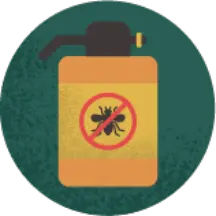
Pesticides

Building materials

Cleaning products and chemicals

Outdoor air pollution
Various indoor air irritants – such as mold and dust mites – are also indoor allergens, which can trigger allergic reactions and asthma attacks3. So, improving the air quality in your home can help reduce flare ups of your indoor allergies.
Common Indoor Allergens & Where to Find Them
In the US, 99% of homes have at least one common indoor allergen, while more than 70% have between three and six allergens in the home4.
These are some of the most common types of household allergens:

Dust mites are microscopic, insect-like creatures that live in house dust5. They’re often found in couches, carpets, rugs, curtains, and bedding – tending to thrive in warm, humid environments.
These mites are the most common cause of allergies and asthma6. In fact, around four in five US homes have detectable levels of dust mite allergen in at least one bed7.

As well as dust mites, dust particles from around the house can also trigger allergies8. House dust usually contains tiny particles of allergens from indoors and outdoors, including8:
Material fibers
Cleaning detergents
Dead skin cells
Mold spores
House dust clings to most surfaces, especially any ornaments or ‘knick knacks’ you might have on display. It’s usually spread around the house by open windows.

Pets can also cause allergic reactions – or more specifically, you might be allergic to the proteins found in their saliva, urine and dander9. Pet dander is actually flakes of dead skin that are shed over time and can build up on the fur of cats or dogs.
This dander can also spread around your house, especially if you let your furry friends sleep in your bed or snuggle on the couch with you.
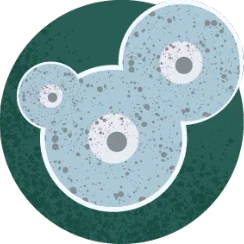
Whether in the kitchen, basement or bathroom, mold and mildew love damp areas. Check for growth on surfaces around the sink, bathtub or shower, as well as leaky faucets and pipes under the sink.
Refrigerator drip trays are another hot spot for mold, so it’s a good idea to keep them clean.

Nobody likes finding bugs in their home – they hide in walls and cracks, spread germs, and cockroaches are actually a common allergy and asthma trigger10. Cockroaches are most often found in urban areas, inside up to 98% of homes – particularly in the South, as they thrive in the warmer climate10.
Tips for Improving Indoor Air Quality
Using our indoor air quality tips may help reduce indoor allergens in your home, and relieve any symptoms you might experience.
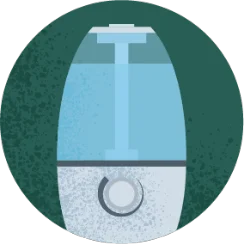
Using a High Efficiency Particulate Air (HEPA) air purifier or filter is one of the most effective ways to improve indoor air quality. This helps rid your home of dust and other allergens.
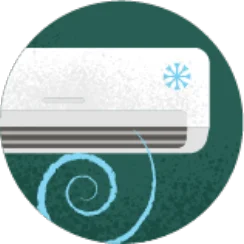
Air conditioning actually dehumidifies the air and filters out pollen, which doesn’t cope well in airflow. Crank it up in the summer months to keep you cool and sniffle-free.

Open bathroom windows while showering to let out moist air, and help prevent mold and mildew growth. Windows in other rooms meanwhile should remain closed, to reduce the amount of outdoor allergens such as pollen entering your home.

Low-light-requiring houseplants can help improve indoor air quality, as their roots and leaves act as a filter to catch indoor allergens11. Some of the best indoor plants for air quality are11:
Chinese Evergreen
Peace Lily
Bamboo Palm
English Ivy
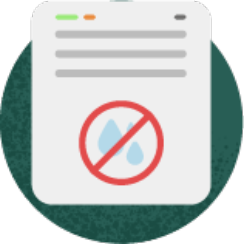
When it’s too cold out for the AC, use a dehumidifier to keep the air dry. This will help prevent the spread of mold.

You can try to prevent the spread of pet dander in your home by keeping pets off furniture, tables and counter tops. It may also be a good idea to turn the places where you spend most of your time into pet-free zones.
Clean Often to Get Rid of Common Indoor Allergens
Soothe your allergy by cleaning regularly to reduce the spread of allergens indoors. Our top cleaning tips can help you to get rid of allergies at home:
Dust and Vacuum Weekly – This will help minimize allergens before they get into the air – use a vacuum cleaner with a HEPA air filter to trap as many allergens as possible
Clean Your Heater – Forced-air heating can blow dust into your home, so make sure you clean the filters regularly to keep dust particles down
Wash Your Bedding Weekly – Your bed linen should be cleaned in hot water once a week. For the best results, use dust-mite proof covers on pillows, mattresses, and box springs
Wash Curtains and Rugs Monthly – Wash curtains, throws, rugs and other washable decorations in hot water at least once a month. Wipe down blinds with a damp microfiber cloth to keep them dust-free
Deep Clean Your Bathroom – Mold thrives in moist areas, so make it a monthly mission to scrub down your entire bathroom – including the sink, tub, and shower
References
https://newsnetwork.mayoclinic.org/discussion/mayo-clinic-minute-reducing-dust-mite-allergies/
https://www.epa.gov/indoor-air-quality-iaq/introduction-indoor-air-quality
https://www.jacionline.org/article/S0091-6749(17)31590-7/fulltext
https://www.mayoclinic.org/diseases-conditions/dust-mites/symptoms-causes/syc-20352173
https://my.clevelandclinic.org/health/diseases/17712-dust-mite-allergies
https://www.lung.org/clean-air/at-home/indoor-air-pollutants/dust-mites
https://www.mayoclinic.org/diseases-conditions/pet-allergy/symptoms-causes/syc-20352192
https://acaai.org/allergies/allergic-conditions/cockroach-allergy/
https://ntrs.nasa.gov/api/citations/19930073077/downloads/19930073077.pdf
Links to other parties’ articles and websites are provided for convenience only. Kenvue is not responsible for their content.



